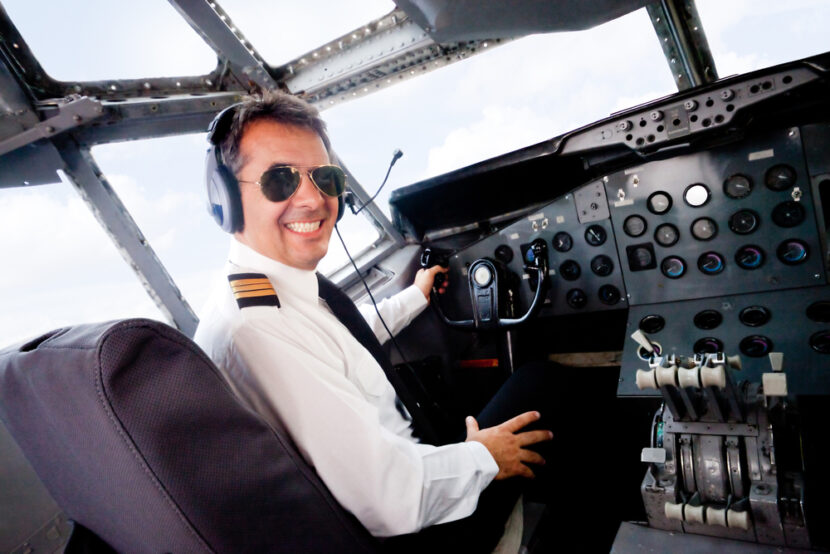DALLAS – For passengers travelling between smaller cities and large hub airports, the ticket may say Delta, American or United, but they’re likely flying on a regional airline whose planes are painted in the major carrier’s colours.
This arrangement helps the big airlines pack their planes more cheaply and contributes to recent record profits.
It isn’t as wonderful for the regional airlines, however. Their profits are shrinking, costs are rising, and they’re having trouble finding enough pilots to work for the salaries they pay.
Consumers should be concerned. Fares could rise as regional airlines are forced to raise pilots’ pay. Aviation experts predict that some regional airlines may fail, which could lead to reduced service at smaller airports.
This week, an airline industry group said that 86 communities – from former hubs such as Cleveland and Memphis to small cities like Dickinson, North Dakota, and Hollis, Alaska – have lost at least 10 per cent of their flights since last year. Regional airlines say the trend will get worse this winter and next year because of a pilot shortage.
About half of all passenger flights in the U.S. are operated by regional airlines. The planes don’t say Republic, SkyWest or Mesa on the side – they are painted in the colours and logos of brands such as Delta Connection, American Eagle or United Express.
A decade ago, many of the regionals were earning steady profits. That began to change when several of the big airlines went through bankruptcy and rewrote their contracts with regional airlines to cap the small guys’ profit margins.
Regionals that boasted 20 per cent profit margins in the late 1990s suddenly had their margins capped at around 12 per cent, a level some don’t even reach, says Robert Mann, an airline-industry consultant.
The most successful regional airlines are still making money, but far less. SkyWest, which earned at least $110 million each year from 2005 through 2008, made just over $50 million each of the past two years. Republic earned about $80 million a year from 2006 through 2008, but earned just $26.7 million last year. It lost money in 2010 and 2011.
Many regional pilots look to move up to the bigger airlines – and better pay – after a few years. But with recession, the 9-11 attacks, retrenchment at the big airlines, and an increase in the pilot retirement age to 65, it turned into “a lost decade” of career stagnation, says William Sprague, a pilot for American’s Envoy Air subsidiary. He expected to spend five years at a regional; it has turned into 17.
Now American is shrinking Envoy’s fleet in a cost-cutting squeeze. “The future of our carrier looks bleak. I’ve never seen morale lower,” says Sprague, who is also a union leader. He says many pilots are bolting for low-cost carriers like Spirit, Allegiant and Frontier, or even to fly corporate planes.
The regional airline industry may soon experience the kind of consolidation that thinned the ranks of the largest airlines between 2008 and the end of 2013.
Helane Becker, an analyst for Cowen and Co., says the regionals face a basic problem: Their fares are set by their contracts with big-airline patrons. That leaves them little control over revenue and limited ability to pass along higher costs.
“When fuel prices go up, the major airlines can raise ticket prices,” but the regionals must wait several years until they can re-negotiate their contracts with the major airlines, Becker says. She recently predicted that Envoy and SkyWest’s ExpressJet unit could be shut down as the sector consolidates.
Competition among the regionals is fierce.
“The biggest cost they can control is what they pay their labour,” says William Swelbar, an aviation researcher at MIT and board member at Hawaiian Airlines. “You need to squeeze labour to be competitive and win flying contracts.”
The result is that pay for regional first officers, or co-pilots, starts around $22,000 a year, according to the Air Line Pilots Association. That’s after applicants might spend more than $100,000 for education and flying time to qualify. Union officials say such low wages discourage many qualified pilots from signing up.
The regional airlines blame the pilot shortage on a new federal rule that requires shorter days and more rest for pilots, and another that raised the amount of flight time needed for beginning airline pilots from 250 hours to 1,500 hours. That narrowed the pipeline of potential pilots, according to Roger Cohen, president of the Regional Airline Association, the industry’s trade group.
“Even if you were to double or triple the salaries tomorrow, that is not going to increase the pipeline of pilots overnight,” Cohen says.
Regional airlines have cited the shortage in cutting service this year. Republic grounded 27 planes, and a smaller regional, Great Lakes Airlines, ended government-subsidized service to several small communities.
The regionals agreed to the current conditions, so they can’t whine – they just have to adapt, says Bryan Bedford, the CEO of Republic Airways Holdings Inc.
If pilot salaries rise, Bedford says, it is his job to find offsetting costs and live within the contract. “It’s not Delta’s problem, it’s not United’s problem, it’s not American’s problem – it’s Republic’s problem.”
